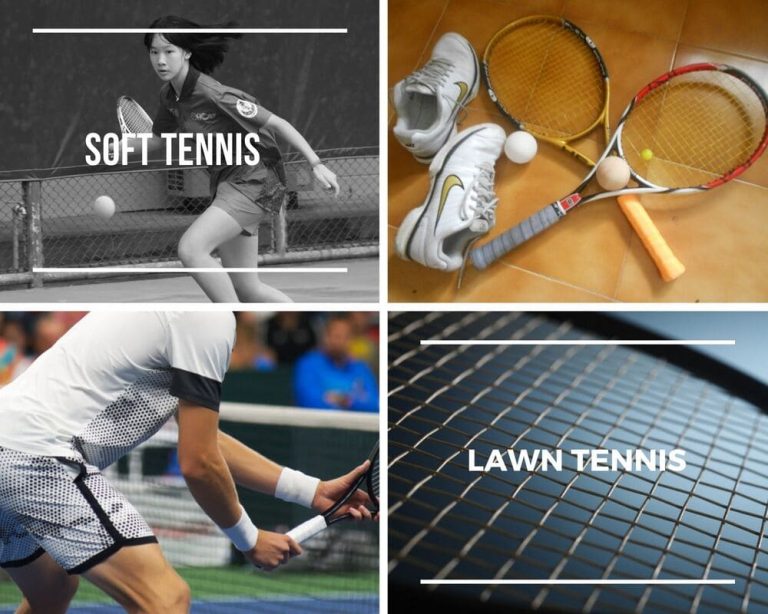Multifilament and Polyester Strings

Tennis strings are a critical component of a tennis racquet and can have a significant impact on the performance and feel of the racquet. There are two main types of tennis strings multifilament and polyester.
Multifilament strings are made from multiple strands of fibers woven together, while polyester strings are made from solid, continuous fibers. In this article, we’ll explore the key differences between these two types of strings and help you determine which type is best for your playing style.
Top Strings Review: Best Tennis Racquet Strings
Multifilament Vs Poly Strings

Here’s a table summarizing the differences between multifilament and polyester strings:
| Feature | Multifilament | Polyester |
|---|---|---|
| Material | Multiple strands of fibers woven together | Solid, continuous fibers |
| Playability | Softer feel, greater comfort | Harder feel, more control |
| Power | More power | More precision, more spin |
| Tension Maintenance | Poor | Good |
| Cost | More expensive | Less expensive |
| String life | Shorter | Longer |
| String movement | More movement | Minimal movement |
| String gauge | Available in different gauges | Available in different gauges |
Multifilament Strings for Spin
Multifilament strings can produce varying levels of spin, depending on their construction and design. Generally, multifilament strings that have a textured surface or a co-polymer blend can produce more spin than those with a smooth surface. Strings that are made from multiple monofilament fibers twisted together can also generate more spin than those made from a single monofilament fiber.
Read Also: Best Multifilament Strings
Additionally, strings that have a firmer, more elastic feel will often produce more spin than those that are softer and less elastic. The string’s gauge and tension can also impact the amount of spin a player can generate. Thinner gauges and higher tensions tend to produce more spin.
It’s important to note that string choice is just one factor that can impact spin in tennis. Other factors such as racquet head shape, string pattern, and playing style also play a role.
Most Durable Multifilament Tennis String
Durability is not a strong point for multifilament strings, as they are known for their softer feel and greater comfort, rather than their durability. However, some of the most durable multifilament tennis strings on the market include:
It’s worth noting that these strings still have a shorter lifespan compared to polyester strings, but they offer improved playability and comfort compared to the more durable polyester strings. Ultimately, the durability of multifilament strings can depend on various factors such as the frequency of play, string tension, and string maintenance.
Top Multi Strings
Best Polyester Strings for More Spin
Polyester strings are highly sought after by competitive tennis players due to their remarkable spin capabilities. The right polyester string can transform your game, taking it to new heights. With the right combination of grip, firmness, and elasticity, these strings can give you the power and control you need to dominate the court.
When it comes to spin-friendly polyester strings, there are several top contenders to choose from.
These above-mentioned are some of the most popular options that tennis players swear by. Whether you’re looking to add more spin to your serve, or you want to add more bite to your groundstrokes, these strings can help you make it happen.
Of course, it’s worth noting that polyester strings can be less comfortable compared to multifilament strings. If comfort is a top priority for you, you may want to consider a softer string option. However, for those who prioritize spin, control, and power, a top-quality polyester string is a way to go.
Top Poly Strings
In conclusion, multifilament and polyester strings offer different benefits and drawbacks for tennis players. Multifilament strings offer a softer feel, more power, and greater comfort, but are less durable and have a shorter lifespan. Polyester strings, on the other hand, offer more control, precision, spin, and durability, but are harder and less comfortable. When choosing between these two types of strings, it’s important to consider your playing style and personal preferences. Whether you prefer a softer feel or more control, there is a string type that will meet your needs.

As someone who enjoys both playing tennis and writing, I strive to embody a combination of skillful technique and unwavering perseverance on the court while simultaneously offering valuable observations and reflections to my audience through my articles. My overarching objective is to motivate and encourage others on their individual paths towards tennis success.
























